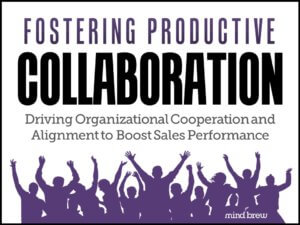In a recent webinar for Playbook subscribers—Maximizing the Effectiveness of Inside Sales—we explored how and why leading sales operations are rethinking the role and function of their Inside Sales groups. We talked about the new sales model they’re working toward, explaining more than a dozen strategies and tactics they’re using to get there.
And along the way, we exposed a fatal flaw in many sales operations’ somewhat outdated concept of Inside Sales…
Over the last decade, there have been some significant changes in B2B buyer behavior. Prospects are no longer relying on salespeople to gather basic information. Instead, they’re doing a lot of research on their own, via the web. And by the time they choose to interact with a human being at a potential supplier, they are already well down the educational spectrum and very far along in their decision-making processes.
While all of this has been taking place, many sales operations are still clinging to the notion that Inside Sales is a great place for entry-level people to gain some experience. They’re still holding onto the idea that, if they’re really serious, prospects will tolerate pointless interactions and delays on their way to getting connected with a “real” salesperson.
So…in a business environment where those first human interactions and responses can determine the outcome of a purchasing decision, many sales operations are failing to put their best foot forward and instead choosing to lead with their “farm team.”
The concept of Inside Sales as a “farm team” or “training ground” was established a long time ago, when buyer behaviors and expectations were dramatically different than they are today. It may have been perfectly acceptable back then to put your least experienced people on the front line, but it’s a huge disconnect with today’s buyers.
Leading companies have recognized the changing dynamics and are now taking action to correct the situation. And sales operations whose concept of Inside Sales is stuck in the past may soon find themselves stuck with the leftovers.











